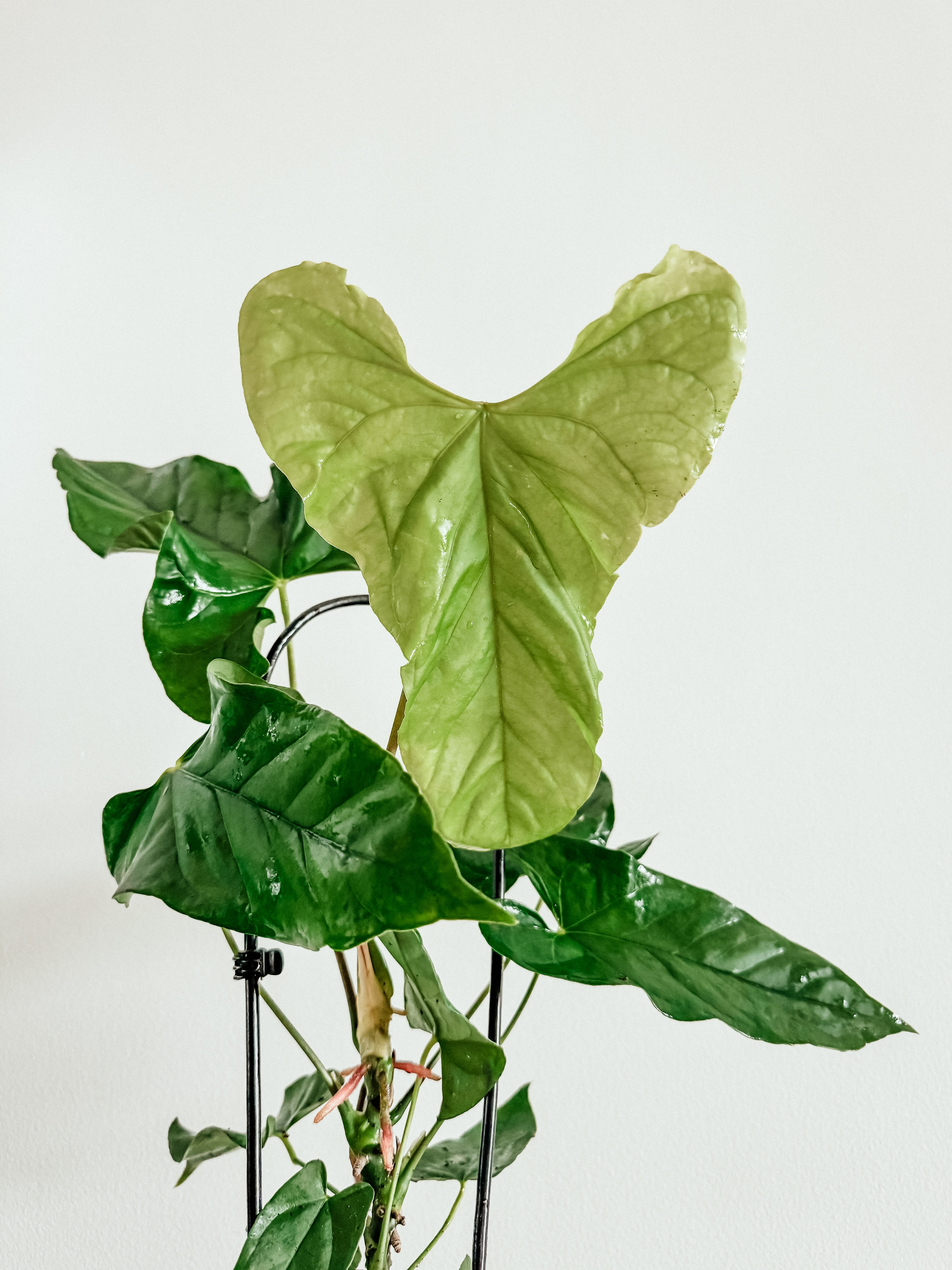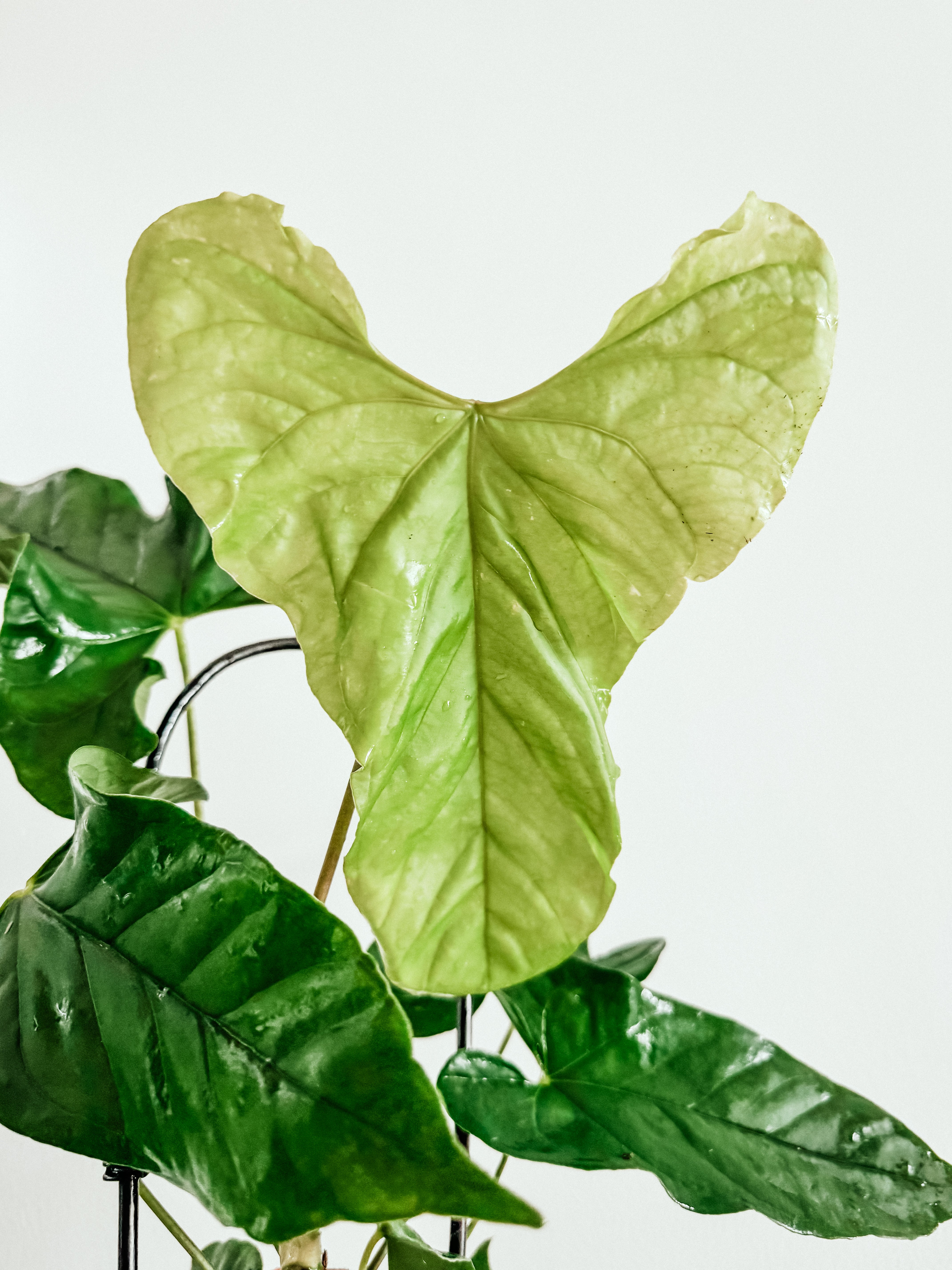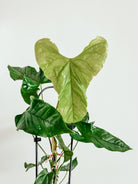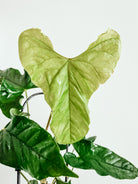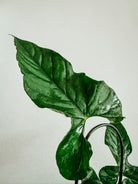Anthurium Balaoanum
Couldn't load pickup availability
🌿 Anthurium Balaoanum Care Guide
🪴 Light
Provide bright, indirect light. This tropical plant thrives in filtered sunlight, similar to the dappled light of a rainforest canopy. Avoid harsh direct sun, which can scorch the delicate leaves.
If grown indoors, place it near a bright window with sheer curtains or in a room with plenty of ambient light.
🌡️ Temperature
Keep the plant in warm, stable temperatures between 20°C and 30°C (68°F–86°F).
Avoid drafts, sudden temperature changes.
💧 Watering
Water when the top 2–3 cm (1 inch) of soil feels slightly dry.
-
Water thoroughly until it drains out of the pot.
-
Empty any water that collects in the saucer to prevent root rot.
-
In cooler months, reduce watering slightly.
Anthuriums prefer evenly moist—but never soggy—soil.
🌫️ Humidity
Anthurium balaoanum loves high humidity (around 70–90%).
To maintain this:
-
Use a humidifier, or
-
Place the plant on a pebble tray with water, or
-
Group it with other tropical plants.
Low humidity can cause leaf edges to brown or crisp.
🌱 Soil
Use a loose, well-aerated aroid mix that retains some moisture but drains quickly.
A good mix includes:
-
Orchid bark or coco chips
-
Perlite or pumice
-
Peat moss or coco coir
-
Optional: a bit of charcoal or sphagnum moss
This mimics its natural epiphytic environment and keeps roots healthy.
🌾 Fertilizer
Feed every 4–6 weeks during active growth (spring and summer) with a balanced liquid fertilizer diluted to half strength.
You can also use an orchid or aroid-specific fertilizer for better foliage and root health.
Stop or reduce feeding in fall and winter when growth slows.
🪴 Repotting
Repot every 1–2 years, or when roots begin to outgrow the pot.
Choose a pot just slightly larger than the current one, with good drainage.
Spring or early summer is the best time to repot.
🌘 Dormancy & Growth
Anthurium balaoanum tends to slow down in growth during cooler months but rarely goes completely dormant. Keep light and humidity consistent to maintain steady growth.
🌸 Foliage & Growth Habit
-
Grows large, elongated heart-shaped leaves with glossy green surfaces.
-
Leaves can reach impressive sizes with proper humidity and light.
-
It is primarily appreciated for its foliage rather than flowers.
🐾 Toxicity
All Anthuriums contain calcium oxalate crystals and are toxic if ingested by pets or humans. Keep out of reach of cats, dogs, and small children.

